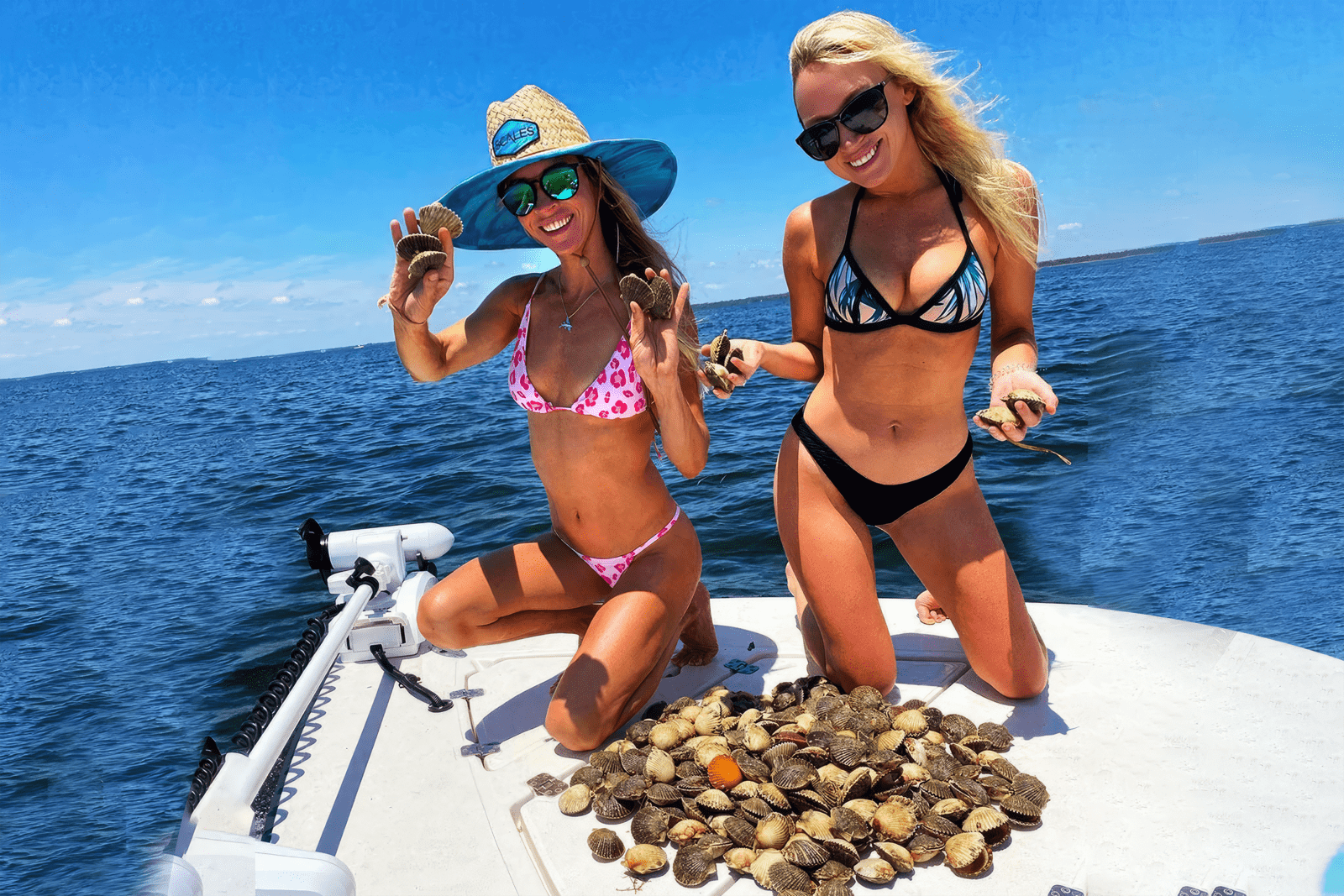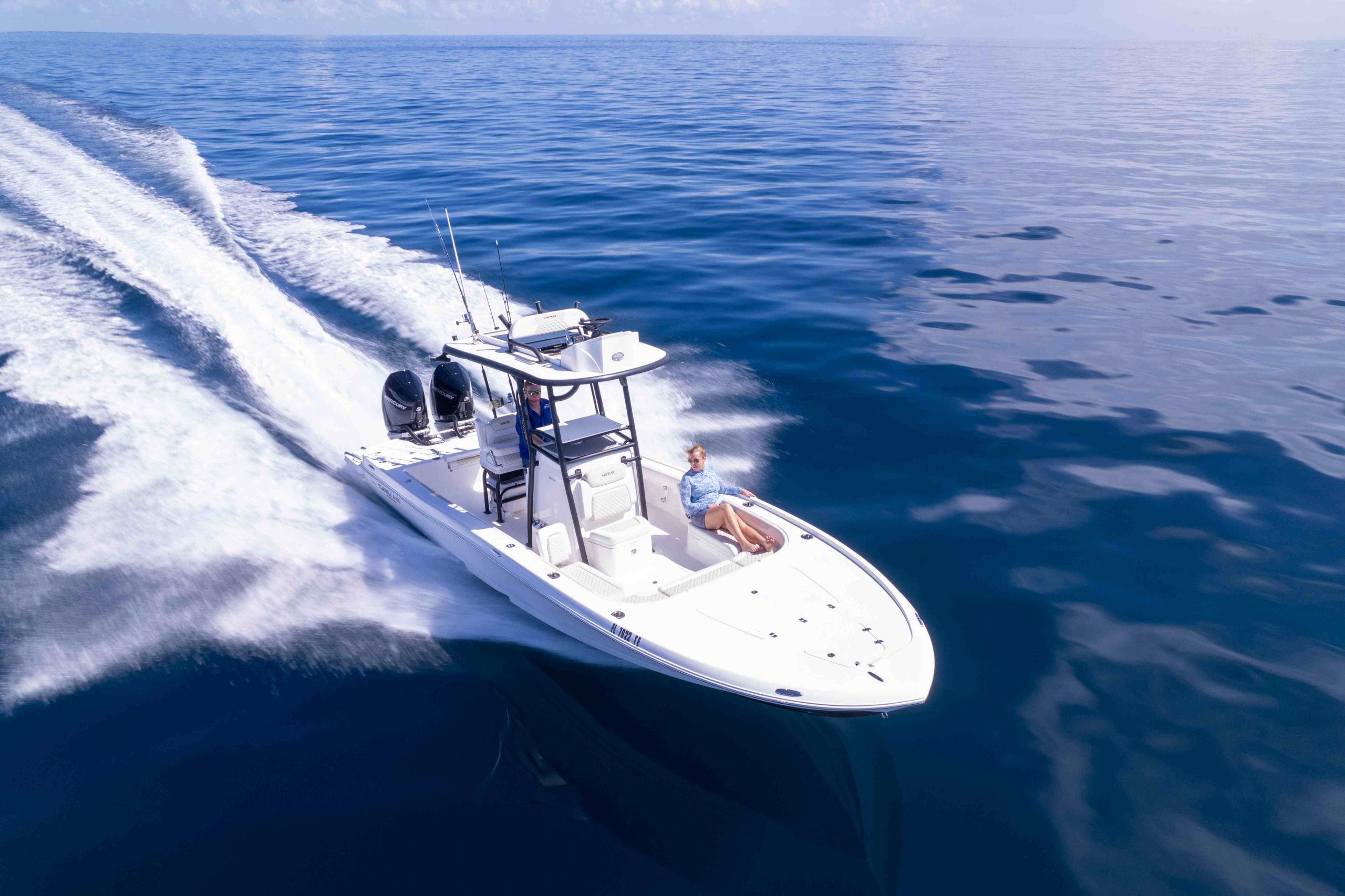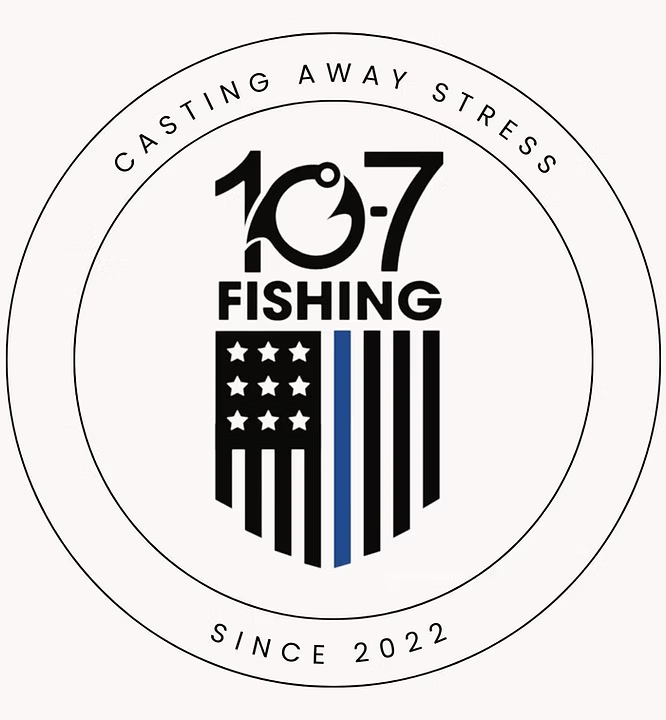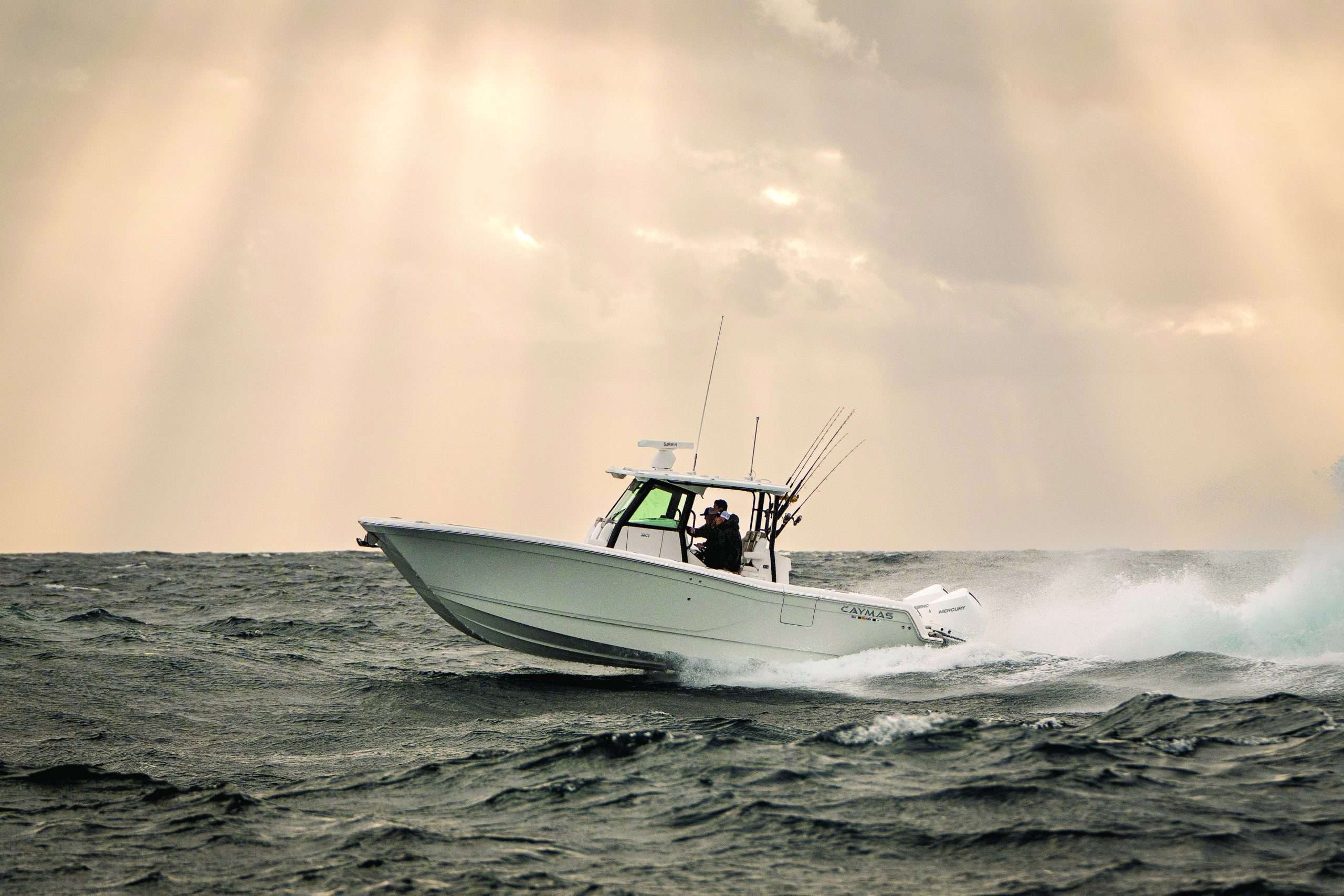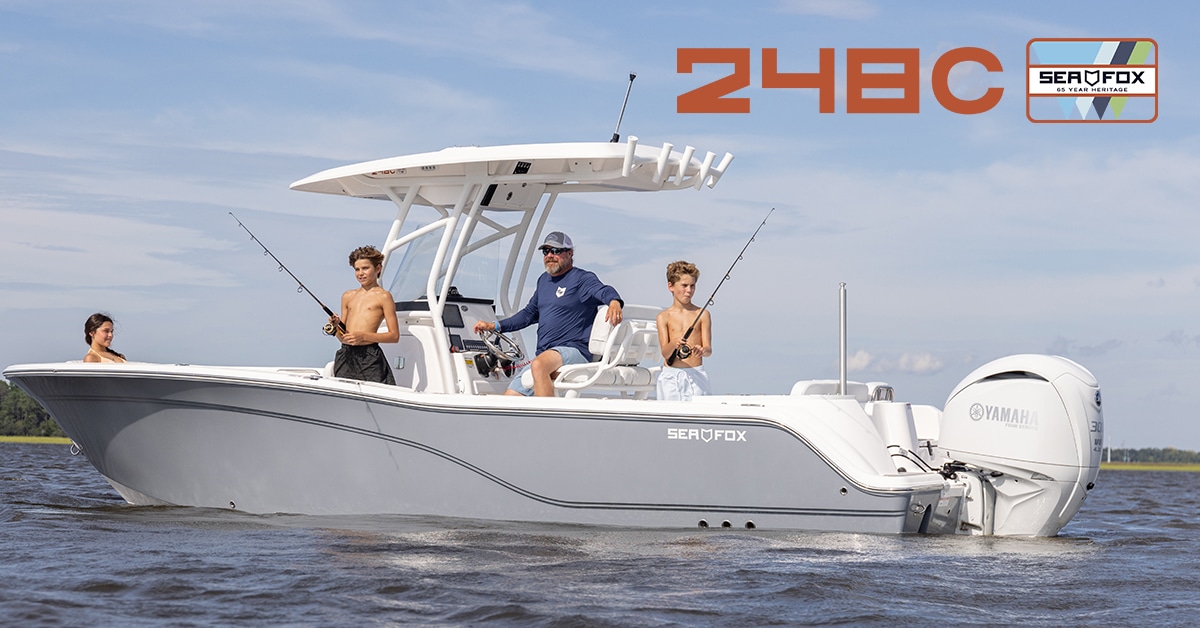The Gulf Provides Ideal Scallop Habitat
Florida’s Gulf of Mexico boasts an ideal combination of warm waters, seagrass beds, and nutrient-rich habitats that support healthy scallop populations. This makes it a prime location for scallop fishing.
The Gulf of Mexico provides the perfect conditions for scallops to thrive – clear waters, ample seagrass for their sustenance, and suitable temperatures. These factors contribute to the abundance of scallops in this region.
Top Scallop Fishing Spots
There are several renowned scallop fishing spots in Florida’s Gulf of Mexico, including Crystal River, Homosassa, and Steinhatchee. These areas are known for their productive scallop beds and attract fishermen from near and far.
Understanding the Scallop Life Cycle
Understanding the life cycle of scallops is vital for successful fishing. It provides insights into their breeding patterns, growth stages, and the best time to target them.
Gaining knowledge about the different life stages of scallops helps fishermen in identifying optimal fishing grounds and times to maximize their catch.
Scallop Fishing Regulations
To ensure the sustainability of scallop populations, specific regulations and guidelines are in place for scallop fishing in the Gulf of Mexico.
Regulations dictate the number of scallops an individual can harvest and the size limits that must be adhered to while fishing.
Knowing the Scallop Season
Scallop season in Florida’s Gulf of Mexico is limited to specific months of the year. Understanding the designated season is crucial to avoid any legal repercussions and to plan your fishing trips accordingly.
Required Licensing
Obtaining the appropriate fishing license is essential for engaging in scallop fishing. Different licenses may be required based on the location and duration of the fishing activity.
Scallop Harvesting Tools and Methods
Various tools and techniques are employed by fishermen during scallop fishing, each with its own advantages and considerations.
Scallop diving is a commonly used method to collect scallops. It involves snorkeling or scuba diving to search for and harvest scallops directly.
Scallop drags and rakes are scraping tools that are used to comb through the seafloor and dislodge scallops from their hiding spots.
Keeping Scallops Fresh
Once harvested, scallops are typically stored in bags or baskets designed to keep them fresh and intact until they can be cleaned and processed.
Tips for Successful Scallop Fishing
To optimize your scallop fishing experience, there are certain tips and best practices that can be followed to increase your chances of success.
Selecting appropriate fishing equipment, such as snorkeling gear, rakes, or nets, is crucial for a successful outing.
Knowing where to find scallop beds, based on factors like seagrass abundance and water clarity, can significantly improve your catch rate.
Using proper techniques to handle and clean scallops ensures their freshness and quality for later consumption.
Enjoying Your Catch
After a productive day of scallop fishing, why not enjoy the fruits of your labor with some delectable scallop recipes?
A refreshing and tangy ceviche preparation that highlights the delicate flavor of scallops.
Grill up some succulent scallops and baste them with garlic butter for a flavorful and appetizing dish.
Indulge in a creamy and satisfying pasta dish that combines perfectly cooked scallops with a rich Alfredo sauce.
Scallop Fishing in Florida’s Gulf of Mexico
Scallop fishing in Florida’s Gulf of Mexico is extremely popular among both locals and tourists. The warm Gulf waters serve as the perfect habitat for these delicious shellfish. Whether you choose to snorkel, dive, or use a mesh bag, catching scallops in the shallow waters is a thrilling experience.
Florida’s Gulf of Mexico is renowned for its abundant scallop population, with millions of these delectable creatures found every year. From July to September, during the peak scallop season, many people are drawn to the area, eager to partake in this exciting activity.
Let me share with you a true story from a scallop fishing expedition involving a group of friends. They decided to go snorkeling in search of scallops and were astonished by the sheer number they found. Within just a few hours, they had collected an impressive quantity of these gems of the sea. Upon returning to shore, they cooked up their catch and enjoyed a mouthwatering seafood feast. This experience truly showcased the splendor and abundance of scallop fishing in Florida’s Gulf of Mexico.
If you’re seeking an enjoyable and fulfilling fishing adventure, look no further than scallop fishing in Florida’s Gulf of Mexico. You’ll have the opportunity to explore the crystal-clear waters and savor the exquisite taste of fresh scallops.
Why is Florida’s Gulf of Mexico Ideal for Scallop Fishing?
Florida’s Gulf of Mexico is ideal for scallop fishing due to its unique environmental factors. The Gulf of Mexico has abundant seagrass beds that provide shelter and food for scallops, making it an excellent habitat for them. These seagrass beds also support a healthy ecosystem by providing various organisms with a place to thrive. The water temperature in the Gulf of Mexico is optimal for scallop growth and reproduction. The warm waters create an ideal environment for scallops to thrive and multiply.
The Gulf of Mexico’s nutrient-rich waters support the growth of phytoplankton, which is a consistent and abundant food source for scallops. Phytoplankton bloom in these waters, attracting scallops and providing them with the nourishment they need to survive and grow.
In addition to favorable water temperature and abundant food supply, the Gulf of Mexico also maintains suitable salinity levels for scallop survival and growth. The balance of salt in the water ensures that scallops can thrive in their natural habitat and maintain healthy populations.
Florida has recognized the importance of sustainable fishing practices and has implemented regulations to ensure the long-term health of the scallop population. These regulations help prevent overfishing and promote responsible harvesting, ensuring that scallops can continue to thrive in the Gulf of Mexico.
Florida’s Gulf of Mexico provides a perfect combination of environmental factors, including seagrass beds, optimal water temperature, nutrient-rich waters, and suitable salinity levels, making it an ideal location for scallop fishing. The state’s commitment to sustainable fishing practices further enhances the health and abundance of the scallop population.
Popular Scallop Fishing Spots in Florida’s Gulf of Mexico
When it comes to scallop fishing in Florida’s Gulf of Mexico, there are several popular scallop fishing spots known for their abundant scallops.
Crystal River is one of the favorite destination for scallop fishing enthusiasts. The grassy flats and shallow waters of this area make it an ideal habitat for scallops, resulting in large numbers of scallops being found here.
Another well-known location for scallop fishing is St. Joseph Bay. The crystal clear waters of this bay provide excellent visibility, making it easier to spot the scallops. The bay is famous for its diverse marine life, enhancing the overall experience for fishing enthusiasts.
Homosassa is a highly attractive spot that draws scallop fishermen from all over. The waters here are teeming with scallops, and the abundance of grassy flats and seagrass beds make it a prime area for scallop fishing.
For those seeking a hidden gem, Steinhatchee is an excellent choice for scallop fishing. Located in Taylor County, this area boasts pristine waters and untouched natural beauty. Scallops are abundant here, making it a must-visit spot for scallop enthusiasts.
While Apalachicola Bay is primarily known for its delicious oysters, it also serves as a great spot for scallop fishing. The bay is home to a thriving scallop population, and its unique ecosystem offers a rewarding location for both fishing and exploration.
If you’re planning a scallop fishing trip in Florida’s Gulf of Mexico, consider visiting one of these popular spots for an unforgettable experience. Just remember to follow all regulations and guidelines to ensure the sustainability of the scallop population and preserve the natural beauty of these areas.
The Life Cycle of Scallops
Scallops, those fascinating creatures of the sea, undergo a mesmerizing journey throughout their life cycle. In this section, we’ll dive into the intricate details of their life cycle and explore why understanding it is crucial for successful fishing. Prepare to be amazed as we unravel the secrets of how these delicate mollusks transform and thrive, shedding light on the interconnectedness between their habitat, behavior, and sustainability. Get ready to uncover the mysteries that lie beneath the surface of Florida’s Gulf of Mexico and gain a deeper appreciation for the art of scallop fishing.
Importance of Understanding Scallop Life Cycle for Fishing
Understanding the importance of the life cycle of scallops for fishing is crucial. This knowledge plays a significant role in helping fishermen make informed decisions and implement practices that contribute to the sustainability of the scallop population.
The life cycle of scallops consists of multiple stages. It initiates with the release of eggs and sperm into the water, which subsequently fertilize and develop into larvae. These larvae then drift and feed until they finally settle on the seafloor and attach themselves to a substrate.
Having an understanding of this life cycle enables fishermen to determine the optimal time and location for scallop fishing. By targeting areas where scallops are in their settlement phase while avoiding locations where they are in their vulnerable larval stage, the impact on scallop populations is minimized. This approach allows young scallops to mature and reproduce effectively.
Comprehending the life cycle of scallops also guides fishing practices. Fishermen can utilize selective harvesting methods to specifically target mature scallops while leaving the young ones undisturbed. This approach maintains a delicate balance that facilitates the growth and replenishment of the scallop population.
Regulations and Guidelines for Scallop Fishing in Florida’s Gulf of Mexico
Regulations and Guidelines for Scallop Fishing in Florida’s Gulf of Mexico
Below is a table outlining the regulations and guidelines for scallop fishing in Florida’s Gulf of Mexico:
| Regulations | Guidelines |
| Scallop Season | July 1st to September 24th |
| Bag Limit | 2 gallons of whole bay scallops per person, or 1 pint of meat per person |
| License Requirement | Valid Florida saltwater fishing license for all scallop harvesters aged 16 and older |
| Boat Safety | Required safety equipment, including life jackets and navigational lights, on all vessels |
| Diving Regulations | Display a dive flag on the water’s surface when using diving equipment for scalloping |
| Location Restrictions | Scalloping allowed only in designated areas of the Gulf of Mexico |
| Size Limit | Minimum shell size of 2 inches for all scallops |
| Harvest Techniques | Only hand or landing nets allowed for scallop harvest; hooks, spears, and other methods prohibited |
What are the Catch Limits and Size Restrictions?
To provide information on catch limits and size restrictions for scallop fishing in Florida’s Gulf of Mexico, we have included the regulations in the table below:
| Type of Scallop | Catch Limit per Person | Size Restrictions |
|---|---|---|
| Bay Scallop | 2 gallons (in-shell) or 1 pint (shucked) | Minimum size limit of 2 inches |
| Calico Scallop | None specified | Minimum size limit of 3/4 inch |
| Zigzag Scallop | None specified | Minimum size limit of 2 inches |
These regulations are put in place to ensure the sustainability of the scallop population and protect the overall ecosystem. It is crucial to adhere to these regulations to maintain the balance of the marine environment.
Pro-tip: Before going scallop fishing, always check for updates on catch limits and size restrictions issued by the Florida Fish and Wildlife Conservation Commission. This will help you stay up-to-date with the most accurate information and ensure responsible fishing.
When is Scallop Season in Florida’s Gulf of Mexico?
Scallop season in Florida’s Gulf of Mexico typically occurs from early July to the end of September. It is important to stay updated on the exact start and end dates as they may vary each year. During this time, recreational scallop fishing is allowed in designated areas along Florida’s Gulf coast. To protect the scallop population and ensure sustainability, scallop fishing is prohibited outside of the designated season. Before going scallop fishing, it is recommended to check with the Florida Fish and Wildlife Conservation Commission (FWC) for any updates or changes to the season dates and regulations. Make sure to have the necessary licenses and permits, follow catch limits and size restrictions, and practice responsible scallop fishing techniques. By doing so, you will contribute to the preservation and enjoyment of this unique experience in Florida’s Gulf of Mexico.
What are the License Requirements for Scallop Fishing?
To engage in scallop fishing in Florida’s Gulf of Mexico, it is important to understand the license requirements. You must obtain a valid saltwater fishing license from the Florida Fish and Wildlife Conservation Commission (FWC) to legally participate in this activity. This requirement applies to both residents and non-residents.
For Florida residents, a regular saltwater fishing license is all that is needed for scallop fishing. This license allows residents to fish, including scallop fishing, all year round. On the other hand, non-residents have a different requirement. They must obtain a non-resident saltwater fishing license specifically for the duration of scallop fishing.
It is essential to follow the FWC’s regulations when engaging in scallop fishing. These regulations include guidelines on catch limits, size restrictions, and the designated scallop season. It is important to familiarize yourself with these rules and ensure compliance to help sustain the scallop populations.
By obtaining the necessary license and adhering to the regulations, you can enjoy the exciting experience of scallop fishing in the Gulf of Mexico while also contributing to the conservation efforts aimed at preserving these abundant shellfish.
Tools and Techniques Used in Scallop Fishing
Get ready to dive into the fascinating world of scallop fishing in Florida’s Gulf of Mexico! In this section, we’ll uncover the tools and techniques used by fishermen to capture these delectable treasures of the sea. From the exhilarating practice of scallop diving to the strategic use of scallop drags and rakes, and the practicality of scallop bags and baskets, you’ll discover the essentials that ensure a successful scallop fishing expedition. So, gear up and let’s explore the exciting methods employed in this thrilling fishery!
Scallop Diving
When engaging in Scallop Diving, it is important to follow these steps in order to have a successful time:
- Begin by properly preparing yourself with the necessary diving gear, such as a wetsuit, flippers, and snorkel mask.
- Once geared up, enter the water and start swimming towards the areas where the scallop beds are located.
- Keep a lookout for clusters of scallops resting on the seabed.
- Once you spot a scallop, approach it cautiously and position yourself directly above it.
- Using either a small net or your hands, gently scoop up the scallop from its position.
- Take care not to touch the scallop’s shell or the surrounding water, as these actions could potentially cause the scallop to swim away.
- To ensure the scallop’s safety as you continue your dive, place it in a bag or container.
- Proceed with your dive, collecting scallops until either you reach your limit or gather enough of them.
- Once you have finished and are ready to return, carefully surface and make your way back to shore, bringing along your harvested scallops.
Here’s a fun fact: Did you know that scallops can actually swim? They achieve this by rapidly opening and closing their shells, which enables them to move through the water using a technique called jet propulsion.
Scallop Drags and Rakes
Scallop drags and rakes are essential tools in the practice of scallop fishing. They play a crucial role in efficiently gathering scallops from the ocean floor. Below are some important details regarding scallop drags and rakes:
1. Scallop drags: These tools consist of metal or wooden frames with nets or chains attached to them. They are dragged along the seabed with the purpose of capturing and collecting scallops. Drag sizes can vary, but smaller drags are more commonly used to minimize disturbance to the habitats.
2. Scallop rakes: These handheld tools resemble small pitchforks, featuring long and pointed teeth. Fishermen employ these rakes to delicately lift scallops from the ocean floor and transfer them into their collection baskets. Rakes are especially effective in shallower waters where dragging may be less efficient.
The utilization of drags and rakes in scallop fishing dates back centuries. Early fishermen relied on basic hand tools made of wood or bone to manually gather scallops. Over time, these tools have evolved into the efficient drags and rakes currently employed. The objective in modern scallop fishing is to sustainably harvest scallops while minimizing any harm to the marine environment.
Scallop Bags and Baskets
Scallop Bags and Baskets are essential tools in scallop fishing. They collect and store the harvested scallops. Here are some key points about scallop bags and baskets:
1. Material: Scallop bags and baskets are made of mesh or netting. They allow water flow while enclosing the scallops securely.
2. Design: The bags and baskets are lightweight and easy to handle underwater. They are often attached to a buoy or float for visibility and to prevent loss.
3. Size: Scallop bags and baskets come in various sizes to accommodate different quantities of scallops. They range from small handheld bags to larger baskets.
4. Regulations: Check local regulations regarding the use of scallop bags and baskets. There may be restrictions on the size or type allowed.
5. Cleaning: Thoroughly clean bags and baskets after each use to remove debris and residue. This maintains the quality of the catch and prevents contamination.
6. Storage: Store bags and baskets in a cool, dry place when not in use to prevent damage and prolong their lifespan.
7. Maintenance: Regularly inspect bags and baskets to ensure they are in good condition. Address any signs of wear or damage promptly to prevent accidents during fishing.
Properly using and maintaining scallop bags and baskets is crucial for successful and sustainable scallop fishing. By following regulations and proper cleaning practices, scallop populations are protected and the integrity of the catch is preserved.
Tips and Best Practices for Scallop Fishing
If you’re eager to master the art of scallop fishing in Florida’s Gulf of Mexico, look no further! In this section, we’ll dive into some valuable tips and best practices that will skyrocket your fishing success. From choosing the right equipment to locating the prime scallop beds, and even proper handling and cleaning techniques, we’ve got you covered. Get ready to reel in those succulent scallops like a seasoned pro!
Choosing the Right Equipment
Choosing the right equipment is crucial for a successful scallop fishing trip. Here are steps to help you select the appropriate tools:
- Decide between scallop diving gear or scallop drags and rakes. If you are comfortable underwater and have the necessary skills, diving gear is a good option. If you prefer to stay above water, scallop drags and rakes are more suitable.
- When selecting diving gear, consider a mask, snorkel, fins, and a wetsuit. The mask should have a clear view underwater, the snorkel should be comfortable to breathe through, and the fins should be suitable for swimming and diving. The wetsuit will keep you warm in colder water.
- For using scallop drags and rakes, choose sturdy and durable tools. Look for drags and rakes made from high-quality materials like stainless steel. Ensure that the rake has sharp teeth or tines to effectively catch scallops.
- Consider using a scallop bag or basket to store the scallops you catch. Look for a bag or basket that is large enough to hold the desired quantity of scallops and has a secure closure to prevent any from escaping.
- Remember to bring a cooler with ice to keep the harvested scallops fresh until you can clean and cook them.
By following these steps and choosing the right equipment, you’ll be well-prepared for a successful scallop fishing excursion.
Locating Scallop Beds
To effectively locate scallop beds in Florida’s Gulf of Mexico, there are several steps you can follow. First, it is important to conduct research on the known scallop habitats in the area. Look for areas with seagrass beds, as these are often prime locations for finding scallops. Consulting with locals or experts who possess knowledge of the area can provide valuable insights on the best places to find scallop beds.
Acquiring nautical charts of the Gulf of Mexico will also be beneficial, as these charts often highlight potential scallop grounds. Such charts will identify areas with seagrass beds where scallops are likely to reside. It is essential to observe the clarity of the water. Clear water is crucial for spotting scallops, so be on the lookout for areas with good visibility.
While in the water, keep an eye out for signs of scallops. Look for scallop shells or trails left by them. Scallops leave distinctive trails in the sand or seagrass as they move. To thoroughly search the seafloor, it is important to be patient and take your time. If necessary, utilize snorkeling or diving equipment to get closer to the seagrass beds.
It is crucial to keep a safe distance and respect the environment when searching for scallops. Avoid damaging the seagrass beds and swim gently to avoid disturbing the natural habitat. As you make findings, be sure to record the locations of the scallop beds. These notes can be referred to in the future or shared with other scallop fishing enthusiasts.
By following these steps, your chances of successfully locating scallop beds in Florida’s Gulf of Mexico will significantly increase.
Proper Scallop Handling and Cleaning
Proper scallop handling and cleaning is crucial for maintaining the quality and flavor of the scallops you catch. Follow these steps to correctly handle and clean your scallops:
1. Start by placing the caught scallops in a cooler with ice. This will keep them fresh and prevent spoilage.
2. Gently rinse the scallops under cold water to remove any debris and sand that may be on them.
3. Hold the scallop with the shell side down and locate the hinge. Carefully use a shucking knife or butter knife to pry the shell open.
4. Once the shell is open, use the knife to separate the scallop meat from the top shell.
5. Take a moment to remove the black stomach sack that is found on the side of the scallop meat. It’s important to discard this sack as it can make the scallop taste bitter if left intact.
6. Rinse the scallop meat under cold water again to ensure there is no remaining residue.
7. Before cooking or storing the scallops, pat them dry with a paper towel.
By properly handling and cleaning your scallops, you are guaranteeing that they are safe to eat and enhancing their flavor. Enjoy the wonderful taste of your fresh scallop catch!
The tradition of scallop fishing dates back centuries, with ancient civilizations such as the Romans and Greeks harvesting scallops from the sea. These shellfish are sweet and succulent. That makes them a favorite among seafood enthusiasts. While techniques and tools for scallop fishing have evolved over time, the importance of proper scallop handling and cleaning remains unchanged. By using the correct methods, you can truly savor the natural flavors of scallops and contribute to the sustainability of this valuable seafood resource.
Delicious Scallop Recipes
Get ready to tantalize your taste buds with a variety of mouthwatering scallop recipes! In this culinary journey, we’ll explore the delightful world of scallop ceviche, savor the succulent flavors of grilled scallops with garlic butter, and indulge in the creamy goodness of scallop pasta Alfredo. Each sub-section serves up a unique and delicious take on this beloved seafood delicacy. So, let’s dive in and discover the art of creating delectable dishes with fresh scallops straight from Florida’s Gulf of Mexico.
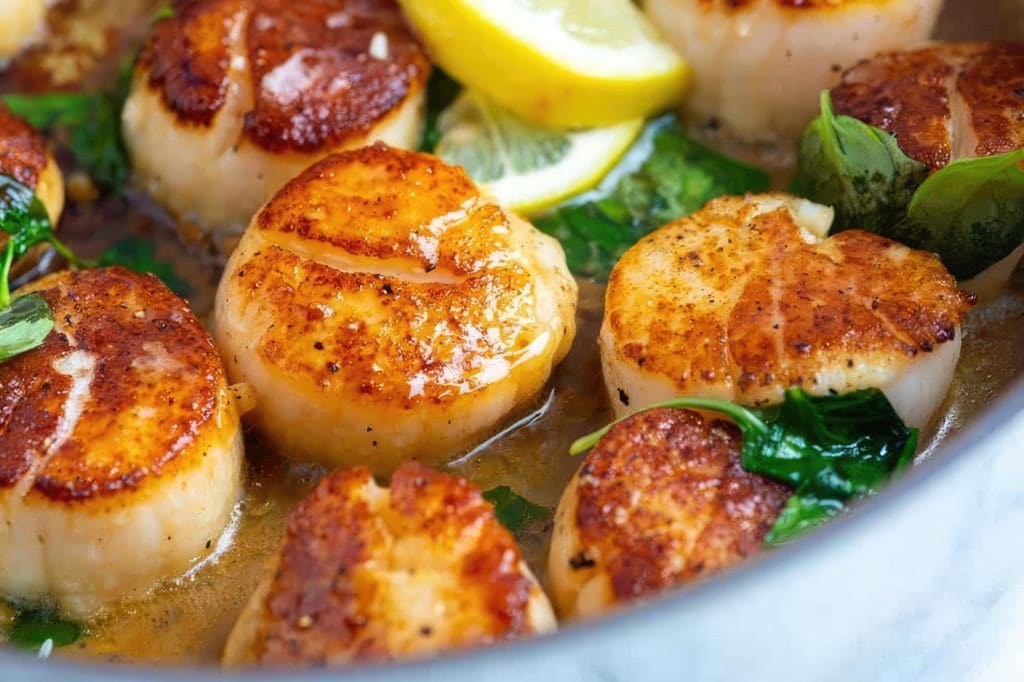
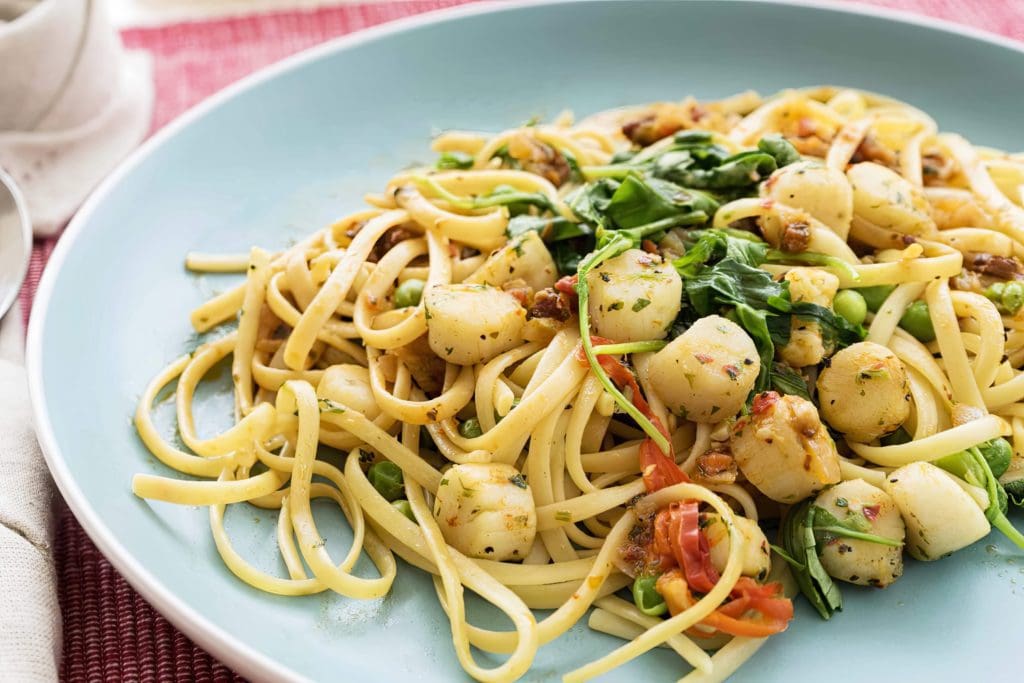
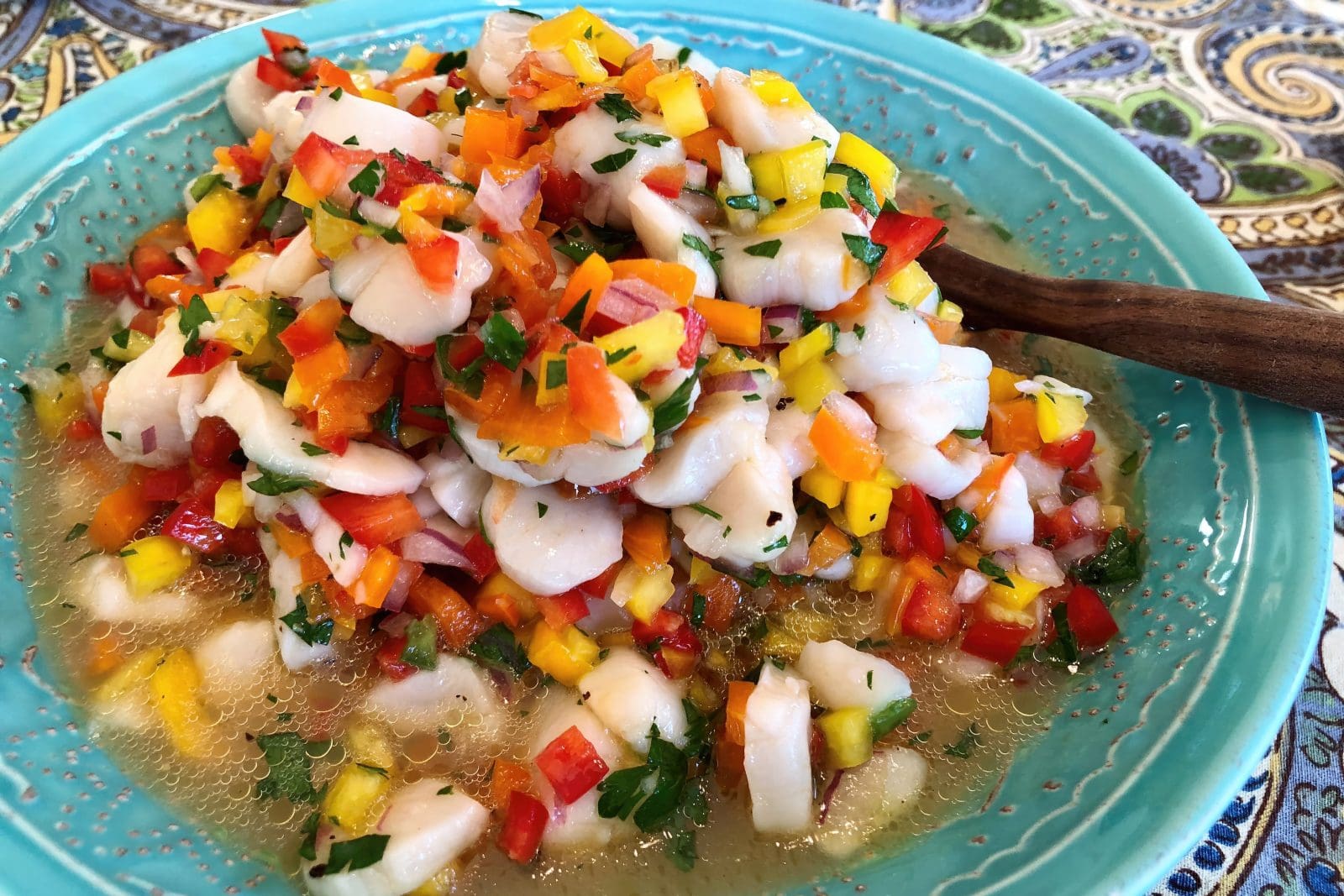
Scallop Ceviche
Scallop Ceviche is a delicious seafood dish that can be enjoyed as an appetizer or a light meal. Here are the steps to make
– Gather fresh scallops, lime juice, red onion, cilantro, jalapeno, and salt.
– Clean and slice the scallops into thin rounds.
– Combine the scallops, diced red onion, chopped jalapeno, and chopped cilantro in a bowl.
– Add freshly squeezed lime juice to cover the scallops and “cook” them by denaturing the proteins.
– Season the ceviche with salt to taste.
– Refrigerate the covered bowl for at least 30 minutes to allow the flavors to meld and the scallops to become tender.
– Serve the ceviche in small dishes or on tostada shells. Garnish with extra cilantro if desired.
Enjoy the refreshing and tangy flavors of Scallop Ceviche for a delightful and healthy seafood experience!
Grilled Scallops with Garlic Butter
Preheat the grill to medium-high heat.
Prepare the scallops by patting them dry with a paper towel and seasoning them with salt and pepper.
Melt butter in a small saucepan over medium heat. Add minced garlic and cook until fragrant, about 1 minute.
Brush the grill grates with oil to prevent sticking.
Place the scallops on the grill and cook for 2-3 minutes per side, until they are opaque and slightly firm.
As the scallops cook, brush each side with the garlic butter mixture.
Once cooked, remove the scallops from the grill and let them rest for a few minutes.
Serve the grilled scallops with garlic butter as a main dish or part of a seafood platter.
This recipe for grilled scallops with garlic butter is a delicious way to enjoy the fresh flavors of the sea. The garlic butter adds a rich and savory taste to the scallops, making them perfect for a summer barbecue or dinner party. Grilling gives the scallops a beautiful char and enhances their natural sweetness. Serve them as a main course with grilled vegetables or over salad greens for a light and refreshing meal.
Scallop Pasta Alfredo
This is a recipe for
- Cook pasta as directed until al dente.
- Heat olive oil in a pan over medium heat.
- Season scallops with salt and pepper, then add them to the pan.
- Cook scallops for about 2 minutes on each side until slightly golden and cooked through.
- Remove scallops from the pan and set aside.
- Melt butter in the same pan and add minced garlic.
- Cook garlic until fragrant, about 1 minute.
- Bring heavy cream to a simmer.
- Stir in grated Parmesan cheese and continue cooking until the sauce thickens.
- Season the sauce with salt and pepper to taste.
- Add the cooked pasta to the sauce and toss to coat.
- Place the scallops on top of the pasta.
- Garnish with chopped parsley or grated Parmesan, if desired.
Enjoy your homemade Scallop Pasta Alfredo!
If you want to enhance the flavors of this dish, here are a few suggestions:
- Squeeze fresh lemon juice over the scallops before cooking to give them a bright and tangy flavor.
- Add chopped cherry tomatoes or roasted cherry tomatoes to the pasta for freshness.
- Sauté spinach or broccoli and add it to the pasta for added nutrition and color.
- Add a sprinkle of red pepper flakes for a spicy kick.
Key Takeaways:
- Florida’s Gulf of Mexico is an ideal location for scallop fishing: The region offers favorable conditions that support the growth and abundance of scallops, making it a popular fishing spot.
- Understanding the life cycle of scallops is crucial for successful fishing: Knowledge about the different stages of the scallop life cycle helps fishermen target the right areas and timing, maximizing their catch.
- Strict regulations and guidelines govern scallop fishing in Florida\’s Gulf of Mexico: Catch limits, size restrictions, and licensing requirements are in place to ensure the sustainability of scallop populations and protect the ecosystem.
Some Facts About Scallop Fishing in Florida’s Gulf of Mexico:
- ✅ Scalloping season in Florida’s Gulf of Mexico takes place during the summer months.
- ✅ The specific scallop season dates vary by county along Florida’s Gulf Coast.
- ✅ Bay scallops are found in dense grass bottoms along Florida’s Gulf Coast.
- ✅ A Florida saltwater fishing license is required for scallop fishing in the Gulf of Mexico.
- ✅ The bag limits for scallop fishing in Florida’s Gulf of Mexico vary by area.
Frequently Asked Questions (FAQ’s)
Scallop fishing season in Gulf County, Florida runs from August 16 to September 24.
Some popular scalloping grounds in Florida include Crystal River, Homosassa, Port St. Joe, Keaton Beach, and Hernando Beach.
Yes, a Florida saltwater fishing license is required for scalloping. The rates for residents and non-residents may vary.
Bag limits for scalloping vary by area, but in most areas, each person is allowed to harvest up to two gallons of whole bay scallops or one pint of bay scallop meat. There is also a limit of 10 gallons of whole bay scallops per vessel.
There is no minimum size limit for bay scallops in Florida. It is important to familiarize yourself with the regulations set by the Florida Fish and Wildlife Conservation Commission (FWC) for the specific areas you plan to go scalloping in.

